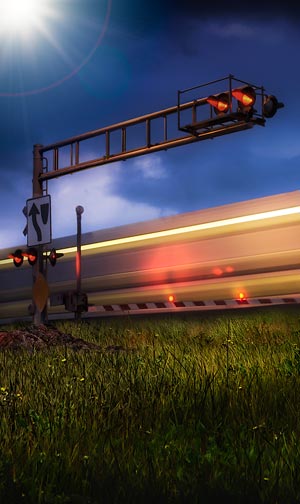There are two, equally important ways of approaching this question. First, it is important to emphasize that there are in fact changes being made. Various sectors of the public are well-informed about crossing safety issues and are thus very concerned and active in the push for safety. A tragic series of passenger rail crashes – the California Metrolink crash, then Boston, and now D.C. – has prompted many officials to look intently at railroad safety issues (although the focus here has not been primarily on crossings). While the safety program Operation Lifesaver is callously used by railroad companies for jury tampering (what do I mean?), beneficial safety programs are out there, and new safety improvements are being implemented to various degrees.
In spite of all of this, there can be no doubt that far, far more could be done – particularly by the negligent railroad companies themselves. Proper warning equipment at railroad crossings costs about $100,000 plus maintenance fees (although railroad companies frequently exaggerate the actual cost of safety equipment to generate the impression that installing safety equipment all over is more implausible than it actually is). The simple fact of the matter is that it is cheaper for railroads to lose a few lawsuits each year than it would be for them to implement the necessary safety changes to save lives. You’d be amazed to hear the spin put on each case by railroad companies: based on their accounts, you’d think that they must not have any responsibilities at crossings. This simply isn’t true, but shifting the blame by pointing fingers at states, local municipalities, and victims has proven financially beneficial for the railroads.
So, in short, the railroads have made money off of ignoring safety issues and denying responsibilities at crossings. Even though doing so leads to the loss of a few lawsuits, their financial losses are still less than if they were to actually implement safety technology. At least in the short-run. In the long run, of course, they’d be better off to pour far more dollars into safety improvements.


